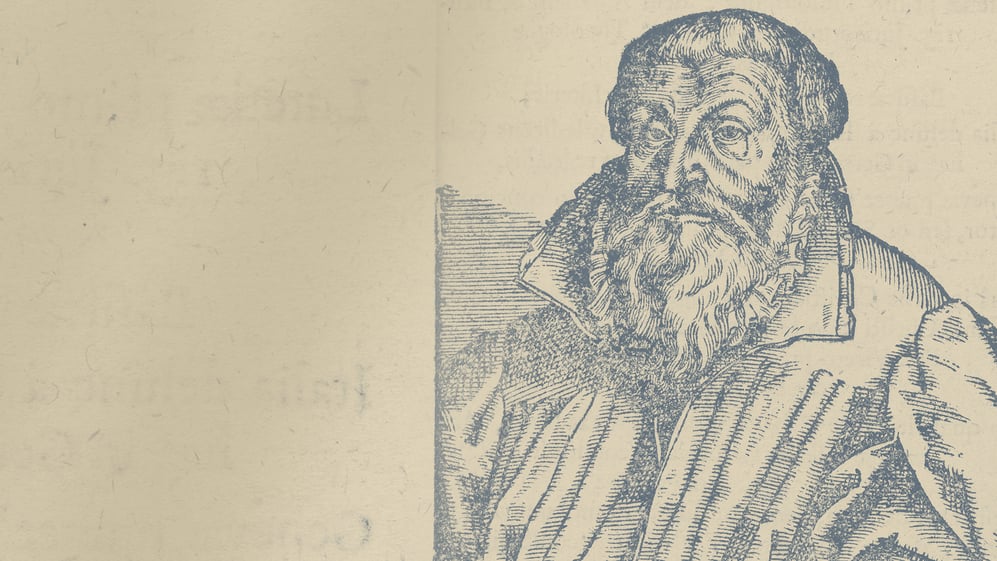This blog post is adapted from The Formula of Concord: The Epitome and Solid Declaration. Read below to learn about the development of the Formula of Concord in Lutheran history.
The first step toward the Formula of Concord was taken in 1573 by Jacob Andreae, who published six sermons that provided a careful analysis of the issues in controversy at the time. Andreae was the chancellor of the University of Tübingen. He proposed biblical solutions to the controversies. The popularity of his sermons helped convince a number of other Lutheran theologians that it was time to resolve the controversies wracking the Church. Andreae was encouraged to take six of his sermons and format them into a more formal confession of faith. The result of his work was the Swabian Concord of 1574.
The Influence of Martin Chemnitz
Martin Chemnitz was one of the most important figures in the development of the Formula of Concord. He worked tirelessly to achieve doctrinal harmony among as many laypeople, pastors, and theologians as possible. He was not given to a brusque and abrasive personality. . . He was more diplomatic. As a young man he attended the aging Martin Luther’s lectures on Genesis in Wittenberg. Melanchthon was also one of his beloved teachers. Chemnitz carefully studied Holy Scripture. He read virtually every book available written by the Early Church Fathers. He eventually became the leading pastor in the territory of Brunswick. His title was “superintendent” of the ministerial consistory of the territory. He was passionate about carefully teaching the pastors in his territory how to be good pastoral theologians. Chemnitz was appointed by his sovereign, Duke Julius of Brunswick, to help revise and rewrite Andreae’s Swabian Concord. The new document was known as the Swabian-Saxon Concord of 1575. In the following years several theologians from southern Germany, including Lucas Osiander and Balthasar Bidenbach, prepared their own document, proposing resolutions to the various theological controversies. It was known as the Maulbronn Formula.
First Draft of the Formula of Concord
In May of 1576 six theologians from various regions in Germany were called to- gether by Elector Augustus for a theological convention. They were Jacob Andreae, Nicholas Selnecker, Andrew Musculus, Christopher Cornerus, David Chytraeus, and Martin Chemnitz. (See the Preface to the Book of Concord, pp. 3–12.) They met in the city of Torgau at the Hartenfels Castle. They worked to combine the Swabian- Saxon Concord and the Maulbronn Formula into a single document, which was known as the Torgau Book. Elector Augustus asked Jacob Andreae to provide a short summary of this document, which became known as the Epitome of the Formula of Concord. They circulated their document to a number of theologians throughout various Lutheran territories. Chemnitz, Selnecker, and Andreae came together at a former monastery, a cloister in the city of Bergen near the town of Magdeburg. Here they considered carefully the suggestions and comments received from reviewers. On May 28, 1577, they were joined by their other three colleagues and they signed the final version of the Formula of Concord. It was submitted to Elector Augustus, who accepted it. From 1577 to 1580 Andreae, and particularly Martin Chemnitz, worked very hard through patient persuasion and conversation to convince many laypeople, pastors, and theologians to accept the Formula of Concord. They prepared an introduction to the Formula of Concord and gathered together other key Lutheran statements of faith. Chemnitz worked tirelessly to advance the cause of concord— harmony and peace—in the Church, based on common confession of the truth of God’s Word.
The Formula of Concord encourages us to stick to the pattern of sound doctrine and refrain from introducing novel ways of speaking about Bible teachings. We should use the very words and phrases used in the Lutheran Confessions to explain the Bible. It is very unwise to take time-tested words explaining one thing and use them to explain another. This only leads to confusion and error.
Post adapted from The Formula of Concord: The Epitome and Solid Declaration copyright © 2021 Concordia Publishing House. All rights reserved.
To continue learning about The Formula of Concord and the historical significance of it, order the book by clicking the button below.













